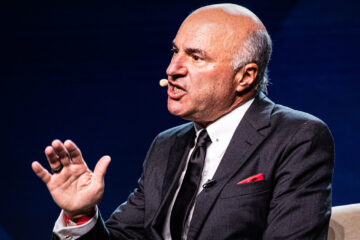His media offensive inflicts another wound to the victims of his bankrupt crypto empire.
FTX’s Sam Bankman-Fried doesn’t want to be the Bernie Madoff of crypto.
The founder of the bankrupt cryptocurrency exchange FTX has launched a media blitz, intended to play down his responsibility for the downfall of his empire.
SBF, as he is called in the crypto space, knew nothing. And how could he have known, since he did not run Alameda Research, his hedge-fund trading platform, from which the collapse started?
“Look, I wasn’t running Alameda; I didn’t know exactly what was going on. I didn’t know the size of their position,” the fallen CEO told the journalist Andrew Ross Sorkin at The New York Times Dealbook Summit via Zoom on Nov. 30, in his first interview since his empire went bankrupt.
The collapse of his organization in a few days, marked by the overnight implosion of the FTX cryptocurrency exchange, was simply due to a “lot of mistakes.”
“I made a lot of mistakes,” he said. “There are things I would give anything to be able to do over again. I didn’t ever try to commit fraud on anyone.”
Struck by Fate
To the FTX customers and investors whose finances are in disarray, he apologizes and tells them that he will do everything to help get their money back. They have to believe him, of course, as they did for three years, with the disastrous consequences that we see now.
Yes, from Bankman-Fried’s perspective, he only made mistakes. He didn’t want to defraud anyone. So what about the scathing criticism from his successor, who described his regime as a Wild West?
“Never in my career have I seen such a complete failure of corporate controls and such a complete absence of trustworthy financial information as occurred here,” John Ray, FTX’s new CEO in charge of the restructuring, wrote in a 30-page document filed with the U.S. Bankruptcy Court in the District of Delaware.
“From compromised systems integrity and faulty regulatory oversight abroad, to the concentration of control in the hands of a very small group of inexperienced, unsophisticated and potentially compromised individuals, this situation is unprecedented.”
Again, that was just a mistake. Everything was a mistake for Bankman-Fried. He didn’t know anything.
“I didn’t knowingly commingle,” he replied when asked whether FTX customer funds mixed with Alameda’s.
Here’s another excerpt: “I failed to pay nearly enough attention, and that’s how we ended up here.”
Who should have paid attention then?
The Circus Must Stop
But as any trader would tell you — and Bankman-Fried is a former trader, having worked at Jane Capital — traders track their positions and their underlying risk. But not him, of course.
The Bankman-Fried media offensive, which began on Nov. 30, painted the image that the former crypto kingpin and his cohort of communicators and advisers want to paint: that of a man who wanted to democratize financial services but got too big too fast and ending up making mistakes. And the subliminal message is: but who doesn’t make mistakes?
They want to erase the Bernie-Madoff-of-crypto label, given by social media, as soon as possible.
He portrays himself as partly innocent, partly guilty, struck by fate. He is the hero of a tragedy by the Greek master Sophocles. He was trying to do good. But Bankman-Fried is more of a tragic hero in the tradition of French playwright Jean Racine: a hero full of contradictions, not a hero of destiny.
If he really wants to be viewed as a tragic hero, he should at least wait for the conclusion of the authorities’ investigations. If they exonerate him, he can put on his cape.
But we are still far from that point. Bankman-Fried cannot be the judge and the defendant. He can’t decide that what happened with FTX and Alameda was just “mistakes.”
Here’s what happened in a nutshell:
As a crypto exchange, FTX executed orders for clients, taking their cash and buying cryptocurrencies on their behalf. FTX acted as a custodian, holding the clients’ crypto.
FTX then used its clients’ crypto assets, through its sister company’s Alameda Research trading arm, to generate cash through borrowing or market-making. The cash FTX borrowed was used to bail out other crypto institutions in summer 2022.
At the same time, FTX was using the cryptocurrency it was issuing, FTT, as collateral on its balance sheet. This was a significant exposure, due to the concentration risk and the volatility of FTT.
The insolvency of FTX stemmed from a liquidity shortfall when clients attempted to withdraw funds from the platform. The shortfall appears to have been the result of FTX’s founder reportedly transferring $10 billion of customer funds from FTX to Alameda Research.
Had FTX clients been told that their cryptocurrencies were on loan to Alameda, for the hedge fund to do as it saw fit?
And why tell the world on Nov. 7 that everything was fine, when he had known, since the day before, that the situation was getting critical?
How about that $1 billion personal loan he got from FTX? Was FTX his personal bank?
Bankman-Fried thought he was king of the world since he sat on top of the future of finance. He recklessly played with the savings of millions of people and it went wrong. He should accept full responsibility and stop thinking about the image he will leave.
Either way, he will go down as the man who caused one of the biggest financial fiascos in history. A thousand TV shows and interviews won’t erase that.
He will probably get a second chance. Financier Bill Ackman and other finance luminaries say they believe him. They will no doubt invest in him again.
But Bankman-Fried must stop his media rush because it inflicts a second blow on his aggrieved FTX customers.
It’s time for the circus to stop.


